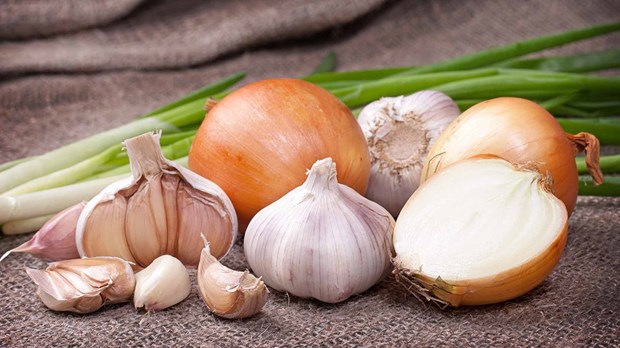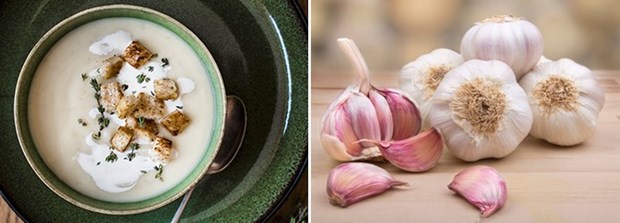Garlic and onion slicing is a matter of chemistry and technique. Don't miss these tips on how to maximise their flavour to their full potential.

Photo by AgroWeb.
Garlic
and onions are the essential ingredients of many dishes. Some chefs prefer to
do without them, knowing that they have a very strong flavour and tend to mask
all the other ingredients. But this is as always a matter of method and
quantity: garlic and onions, in fact, are a concentrate of substances which if
correctly used can positively enhance the flavour of the other ingredients.
Let
us start from the basics: we often speak of garlic and onion together because
they are considered to be similar. And that is indeed the case: both in fact
belong to the amaryllidaceae family. Their chemical and culinary
characteristics are therefore very similar. Each of them, technically, do not
have aroma; that is to say, they do not contain odorous substances.
How to Slice Garlic
The
inside of each garlic clove is called the "germ" which is also the
youngest part of the bulb and therefore rich in the substances that give this
vegetable its typical flavor. In fact, the outer part of the garlic is actually
the oldest, which, with the passage of time, loses its aromatic intensity.
Instead, the germ, which is "the last born", tends to be much more
aromatic. If the odor and the taste of garlic are too strong, removing germs
makes the flavour less intense and more delicate.
I
imagine that this news will astonish you, but the odour of garlic in fact
depends on a reaction caused by slicing. When we slice garlic an aminoacid is
released which is rich in sulphur and immediately comes into contact with an
enzyme called alliinase. So the two create allicin: this is the substance that
gives the garlic the odour and taste for which it is used.
From
this we derive an important lesson: the more we cut off a slice, the more we
encourage the reaction between aminoacid and enzyme, increasing the production
of odours and flavours. Not only that: the slicing ‘only’ allows the reaction
to happen, but the reaction then continues with the passage of time. Therefore,
to sum up, the more we cut a slice and the more we expect to use the sliced
garlic, the stronger the odour and taste will be.
Therefore,
if we are to put a mere trace of garlic in our dish, it is better to cut one
slice in half and use it straight away. If, however we want as much intensity
of flavour as is possible and imaginable, we cut the slice into tiny pieces and
wait for about 10 minutes before using the chopped ingredients. But we should
bear in mind that once the garlic starts to cook, the allicin will change into
a series of compounds with a more delicate aroma.
How to Slice an Onion?
You
will not be surprised to learn that much the same description applies to the
onion. In this case too we are faced with a vegetable without aromas, since
these form only after the onion is sliced. Obviously there is always an
aminoacid on a sulphuric base, very similar to allicin, beneath the phenomenon.
The aminoacid, after the onion is sliced, always comes into contact with the
enzyme alliinase, forming the compounds that give the onion its characteristic
aroma and taste. Furthermore, the enzyme LF-synthase forms propanethial
S-oxide, the substance that causes tears.
It
goes without saying that the same identical advice concerning garlic applies
equally to the onion. With one more thing. Various studies have shown us in fact
that cutting the onion lengthways, that is to say from the top to the bottom
instead of across the middle, reduces the intensity of the aroma and also the
quantity of tears. Not only that: for both garlic and onion, the use of a food
processor tends to intensify the aromas.

Onion and garlic soup | Garlic
Garlic and Onion Soup
To
put into practice all that we have learnt, all that remains is to try an easy
and delicious recipe. This is the fabulous garlic and onion soup. Slice two
large onions and cut up about ten cloves of garlic into small pieces. Sauté the
garlic and onions in plenty of oil for about 10 minutes, then add a glass of
white wine, soften the mixture and add a litre of vegetable stock. Bring to the
boil and simmer on a low flame for 40 minutes. Turn off the heat and leave the
soup to cool for 15 minutes, then add 150 ml of fresh cream, stir it into the
soup and serve it with slices of toast.
Obviously
you now know how to increase or decrease the intensity of the taste of garlic
and onion!
By Riccardo
Meggiato/ FDL